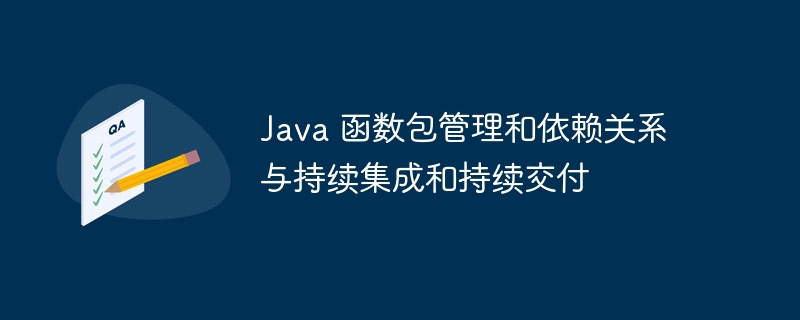
Dependency management of Java function packages is crucial. Tools like Maven, Gradle can be used to manage dependencies. With CI/CD practices, code builds and deployments can be automated. For Maven packages, you can integrate the dependency into your CI/CD pipeline by adding it to pom.xml and setting the scope to "provided".

Java function packages are independent, deployable code packages, commonly used in cloud computing Serverless applications and microservices in your environment. Efficiently managing function package dependencies is critical to keeping software projects healthy.
The Java ecosystem provides several popular dependency management tools, including:
CI/CD practices can help automate the software development and deployment process, ensuring fast, reliable, and repeatable deployments. These practices include:
Suppose we have a Maven-based Java lambda function that needs to use the following dependencies:
<dependency>
<groupId>com.google.cloud</groupId>
<artifactId>google-cloud-functions</artifactId>
<version>2.9.2</version>
</dependency>To ensure that the necessary dependencies are automatically loaded every time the function package is released, we can add this dependency to our Maven configuration:
pom.xml
<project>
...
<dependencies>
<dependency>
<groupId>com.google.cloud</groupId>
<artifactId>google-cloud-functions</artifactId>
<version>2.9.2</version>
<scope>provided</scope>
</dependency>
</dependencies>
...
</project>By setting the scope to "provided", Maven will ignore this dependency during the build process. However, when a function package is deployed to a serverless platform such as Google Cloud Functions, the platform automatically provides the necessary dependencies.
This CI/CD pipeline can use tools like Jenkins or CircleCI to automatically build, test, and deploy our code and integrate dependency management into the CI/CD process.
The above is the detailed content of Java package management and dependencies and continuous integration and continuous delivery. For more information, please follow other related articles on the PHP Chinese website!
